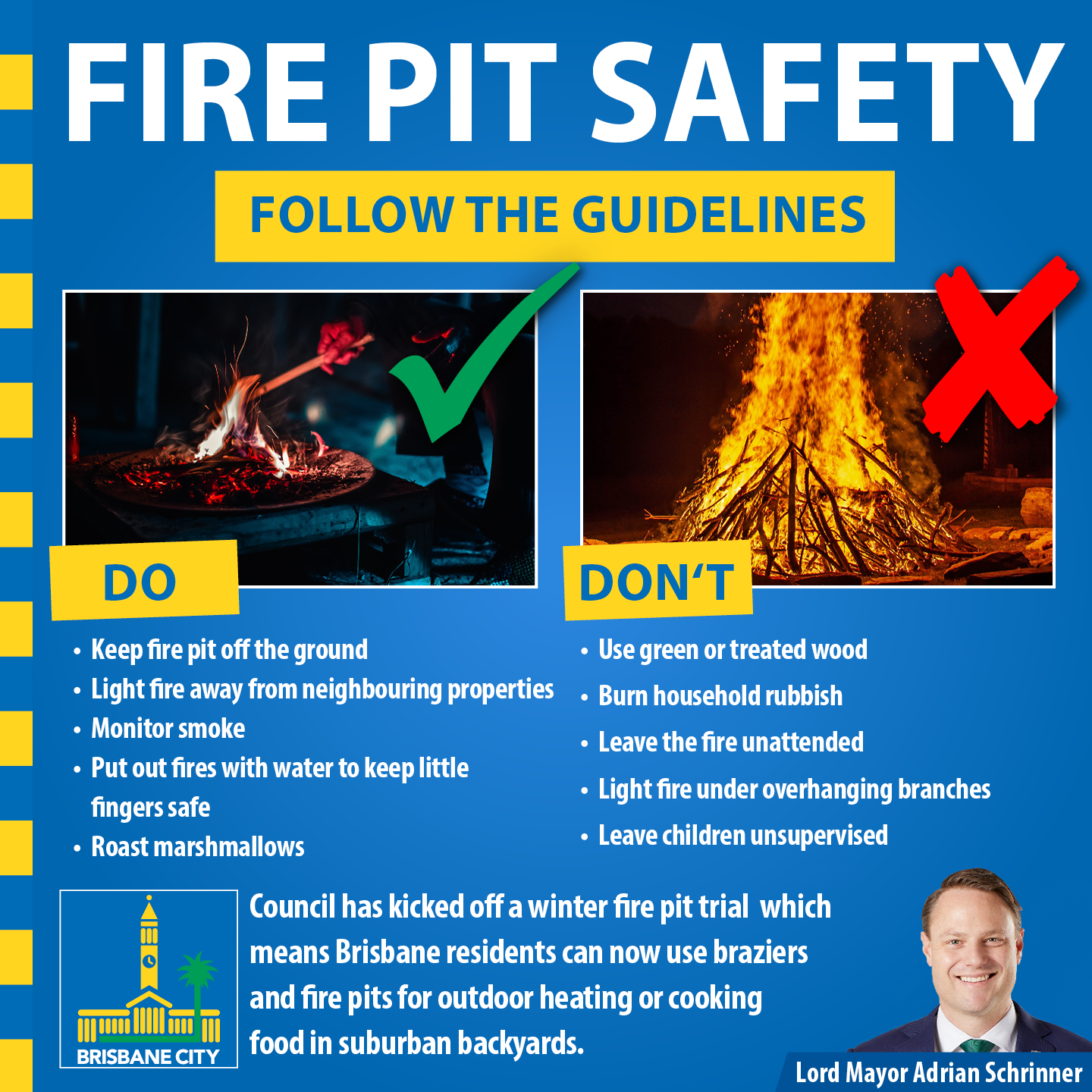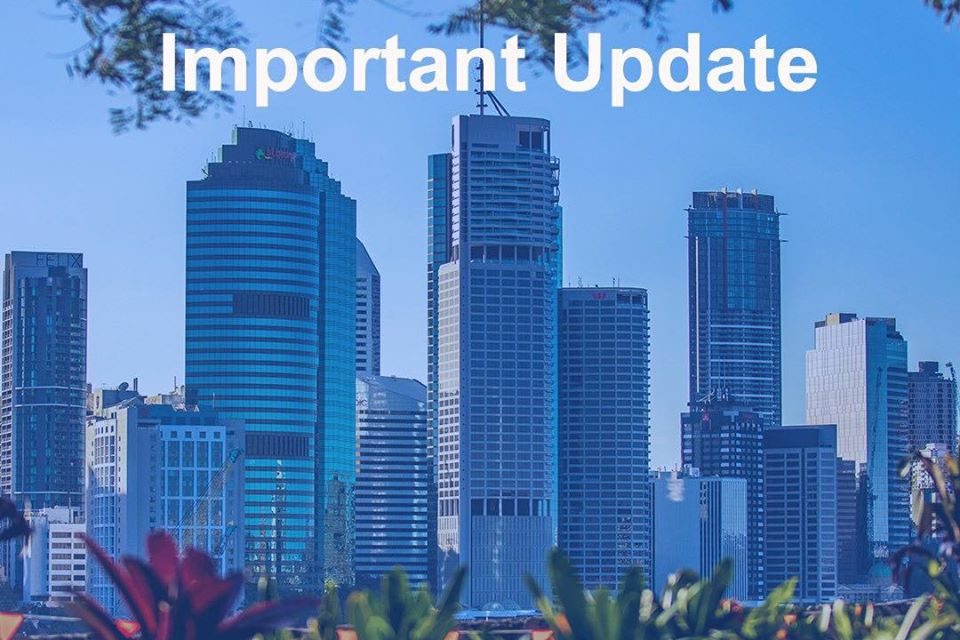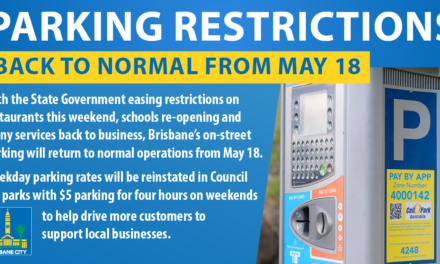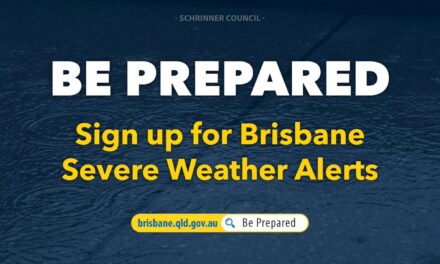Brazier and fire pit heating trial
From 1 June to 31 August 2020, Council is trialling the allowance of outdoor fires for heating purposes in small braziers or constructed fire pits off the ground with proper aeration of the fire, provided:
- the brazier or fire pit is not causing a smoke impact on neighbours and the residents of other nearby premises
- the fire is contained in a brazier or fire pit which is constructed so as to prevent the escape of fire or any burning material contained within
- the brazier or fire pit is not on the ground and is of a design that allows the flow of air into the fire from below and the sides of the fire to enable oxygenation and minimise the production of smoke
- the fire is isolated from other flammable and combustible materials (organic and inorganic) on the property and upon adjacent properties
- the fire is made using only clean, dry, properly seasoned wood or charcoal or other smokeless fuel such as gas
- painted or treated wood, plastics or any other rubbish must not be burnt as these emit hazardous chemicals
- the brazier or fire pit is set back at safe distance from every property boundary and the outermost projection of any nearby buildings or structures
- a responsible person over the age of 18 is in attendance at the fire at all times and until the time that the fire is completely extinguished
- the fire is never left unattended and children are actively supervised when around the fire
- only one brazier or fire pit is used on a property at any one time
- the fire is put out with water. Do not cover with sand or dirt or let the fire burn out overnight
- the fire has not been lit during a total fire ban issued by the QFES or in contravention of any other fire restriction issued by the QFES
- the fire must have minimal flame height
- does not breach the Environmental Protection Act 1994 by causing an environment nuisance, and
- a reasonable and prudent person would not otherwise consider that the fire is causing unacceptable risk of harm to a person(s), or risk of damage to property or protected vegetation.
A brazier is a portable heater, designed to hold hot coals, generally taking the form of an upright standing or hanging metal bowl or box. It always has sides but does not always have a roof or a grill. It is predominately used for heating purposes only.
Backyard burning neighbourhood letter
People are sometimes unaware that their activities are causing a nuisance. Brisbane City Council encourages all residents to talk to their neighbours about nuisance problems before making a complaint to Council.
To assist neighbours with resolving the matter without Council intervention, we have developed a templated letter that is designed for neighbours to use in raising awareness of Council’s requirements and seek co-operation to address the issue in a friendly manner.
You can download the:
- Backyard burning neighbourhood letter (Word – 121kb) – this template letter is designed for neighbours to use in raising awareness of Council’s requirements and seek co-operation to address the issue in a friendly manner.
- Backyard burning – minimising smoke factsheet (Word – 812kb) – this factsheet is designed to provide advice in reducing smoke nuisance or impacts on neighbours.

Minimising smoke from backyard burning
Whether you choose to use a wood-fired BBQ, pizza oven, brazier or fire pit, it is illegal to cause a smoke nuisance under the Environmental Protection Act 1994.
Children, the elderly and people suffering from a respiratory or heart condition are most susceptible to health impacts from smoke. Please be mindful of your family’s and your neighbours’ wellbeing and follow the tips below to reduce the risk of causing smoke nuisance.
Use the correct wood
Never burn treated or painted timber, plastics, rubbish, rubber, paints, fabrics, petrol, oils, solvents, rags or driftwood as they will release toxic chemicals that are dangerous to your family and neighbours.
- Only ever burn dry, well-seasoned wood. The dryness of firewood makes a significant difference to the amount of smoke emitted from a fire. Damp or green wood that has been freshly cut off the tree causes excessive smoke and doesn’t generate as much heat. Wood needs to be dried for upwards of 8 months
- commercially bought firewood may not be properly seasoned and may need further drying out at home. You can usually tell seasoned wood by looking at the ends of cut sections. Dried wood will have large cracks running across the grain. When you hit two pieces of dry wood together, there should be a loud, hollow cracking sound. A dull, muffled sound indicates that the wood is damp
- buy split timber, preferably without bark. Split timber has a greater surface area that allows the wood to dry out and become seasoned more quickly. Split wood should not be thicker than 15 centimetres
- softwoods are easier to ignite, burn faster and produce less coal. They are best used for starting the fire
- hardwoods are harder to ignite, burn at slower rates and produce better coals. As hardwood takes a longer time to ignite, it can lead to higher smoke emissions on lighting or refuelling. Use hardwoods after achieving a good, hot fire with kindling and smaller wood pieces
- avoid burning camphor wood or other highly scented woods that could cause an odour nuisance
- burn only 100% untreated wood. Burning of CCA-treated wood releases arsenic into the air, your home and into the ash which, if inhaled, is dangerous. Any wood product with a coating, such as melamine or formica, painted, stained or varnished wood, MDF, custom wood, chipboard or plywood which has glue and bindings, are also dangerous to burn
- always put the fire out with water. Do not cover with sand or dirt or let the fire burn out overnight.
Store your wood correctly
To avoid smoke, be sure to keep your firewood dry.
- Buy your wood well in advance, remove the packaging and store it correctly to ensure it dries out
- split the wood into pieces of about 15cm in width before stacking in a heap
- wood is best stored in an undercover area on pallets or raised on blocks, not on the ground or the wood will absorb moisture and increase the amount of smoke when burnt
- stacking the wood loosely, or in a crisscrossed manner, will allow air to circulate through the wood heap. A narrow heap, less than 50cm, will also assist in air movement
- do not cover the wood heap with a tarp as this will trap moisture and prevent air circulation
- you may wish to purchase a moisture meter to be confident of the dryness of your wood.
Lighting and maintaining the fire
Smoke comes from a fire that is not burning hot enough.
- First of all, check if your brazier or firepit will allow enough air to the fire. There should be holes around the sides and bottom of the container to draw air through the fire and help avoid smoke
- build the fire using small kindling wood, loosely crumpled paper and/or firelighters
- create a pyramid of kindling in a way that allows air to circulate around the fire. You can expect some smoke when you first start, but it should not last longer than 20 minutes
- Never use petrol, oil or kerosene to help light the fire. This could cause an explosion.
- Once the fire has started, gradually increase the size of the wood you add, until the fire is fully established. Start with soft woods and progress to hardwood when the fire is well established.
- once a hot bed of coals has formed you can add larger pieces of dry, clean, seasoned wood
- do not smother the fire by adding logs that are too large, no more than about two to four kilograms
- a good fire will be hot and aerated with coals and flames glowing brightly. Dark, smouldering wood and a lot of smoke are signs of poor and incomplete burning and insufficient airflow.
Check and monitor the amount and direction of smoke
You are responsible for ensuring that the smoke does not affect others in the community. Monitor the amount of smoke coming from your fire to ensure it is not causing a smoke nuisance.
From time to time stand back and check if there is smoke from your fire and where your smoke is going. Wind, fog, trees and buildings will all affect where the smoke goes. Sometimes on winter evenings, atmospheric conditions will trap smoke low to the ground over the whole neighbourhood.
If you can see that this is happening, or if your smoke is going towards your neighbours’ houses, please be courteous and put the fire out.
Never leave your fire unattended. Actively supervise children around fires.
If anyone is burned, run the affected area under cool running water for 20 minutes and call 000.





